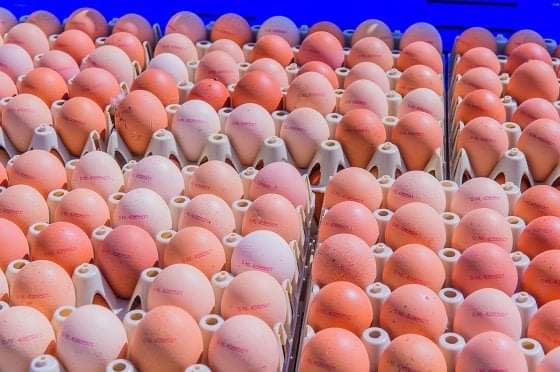Factors affecting Egg Shell Colour
The colour of the egg shell is genetically determined and therefore strain specific. Yet, within a flock you still see considerable variations in shell colour. The colour in itself is not very interesting, the unexplained variation in the flock is more important.
Sometimes you can see a relationship between production levels and shell colour. The more eggs a hen lays, the lighter the shell colour. But there are also certain strains that are very good layers and still maintain a dark brown colour up to the end of the laying cycle. Then again, the causes of pale eggs are multiple and can flare up due to different circumstances.
Variation of egg shell colour in one flock can be a sign of stress.
7 causes of pale eggs and their background
Genetics: The colour of eggs is genetically encoded, but will vary within a flock
Disease: Some diseases damage the oviduct and affect egg production. IB is the most important one regarding the influence on shell colour.
Nutrition: Nutrition has little effect on shell colour. However, nutrient deficiencies can influence the total process of egg development, including shell. Certain drugs create pale eggs (sulphonamides, nicarbazin).
Age: Pale eggs are more common in old flocks. Egg size increases with age and the same amount of pigments is dispersed over a larger surface area. Very light shells may occur due to premature termination of shell pigmentation. If brown-egg flocks are moulted, shell colour is usually darker after the moult than before.
Stress: 3 to 4 hours before laying, the bulk of the pigment is transferred to the cuticle. A premature egg may not have had enough pigment deposited. If the egg is retained longer in the oviduct because of stress, this might cause a thin layer of calcium being deposited, giving the egg a greyish bleached out look.
Parasites: Infestation with roundworms or capillaria worms may cause pale shell and pale yolks, due to damage of the intestinal walls, reducing nutrient absorption necessary for egg development.
Sunlight: Pale eggs occur more in free-range flocks than in closed houses. The reason is not exactly known. Increase in vitamin D3 production by the hen due to exposure to sunlight, combined with vitamin D3 in the ration, could be a reason. (overdose D3).
Courtney-Indbro


